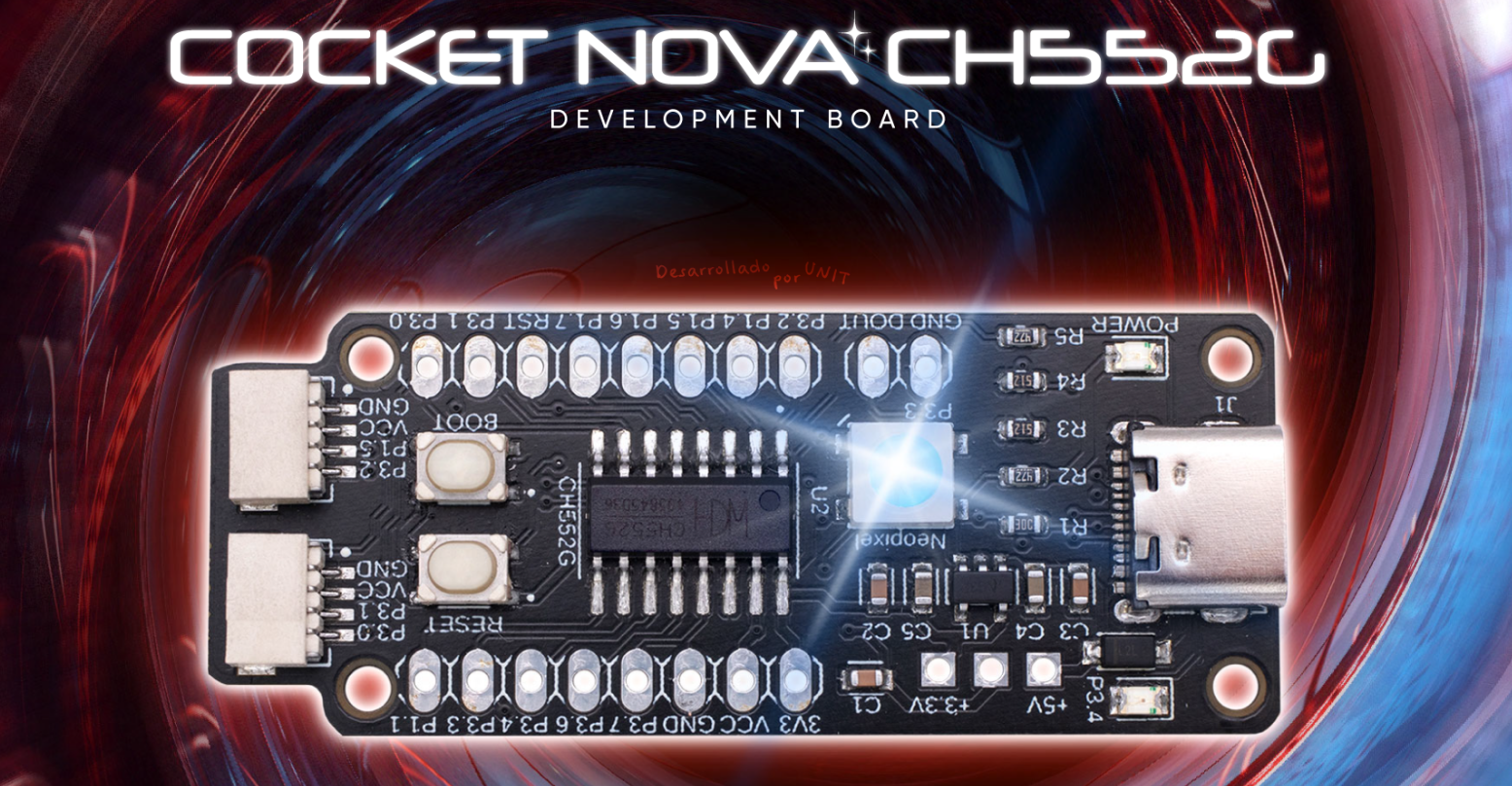-
Cocket Nova CH552G Development Board
2 days ago • 0 commentsThe Cocket Nova development board is a compact board featuring an embedded USB interface. Developed by engineers in Mexico, it operates at a clock speed of 24 MHz and supports 5V. The design allows users to choose between 3.3V and 5V, offering versatility for different projects. The board includes 12 GPIO pins, with 16 pins available on the chip. It also supports use in the Arduino IDE and SDCC, making it accessible for beginners while offering more advanced features.
![]()
Getting started with the Cocket Nova provides a solid foundation for both beginners and those looking to explore more advanced projects. Its simple design allows for easy evaluation and configuration, making it an excellent choice for initial users while providing the potential to tackle more complex tasks. The ability to choose between 3.3V and 5V makes it suitable for a range of sensors and modules, allowing users to experiment with different hardware configurations and understand the basics of interfacing various components. This flexibility makes it a valuable learning tool in electronics education.
![]()
The Cocket Nova is powered by theCH552 microcontroller, which is both highly economical and capable. The CH552, based on the 8051 architecture, offers a good balance between performance and cost, making it an ideal choice for projects that require reliable processing without breaking the budget. Its USB functionality further enhances the board's usability, allowing for easy communication with a host computer for data exchange or firmware updates. While the board is suitable for advanced projects, it is designed to help users gain experience with microcontrollers in a simple, yet powerful way. This makes it particularly useful for those transitioning from basic electronics to more advanced embedded systems.
This project is designed to train beginners in the field of embedded devices, helping them progress to more advanced boards and designs. The development environment supports both Ubuntu and Windows platforms, with a preference for open-source operating systems. By supporting open-source software, the Cocket Nova aligns with the growing movement towards transparency and accessibility in technology, ensuring that users can customize their development environment according to their preferences. The course and design are based on the work of Wagiminator, an excellent developer of board designs and code resources, whose contributions have greatly influenced this project. The configuration setup is available in theGetting Started guide on the web, which provides comprehensive instructions to ensure that users can quickly become familiar with the board's capabilities and begin prototyping.
The Cocket Nova has the potential to be used in a variety of projects, and it offers an excellent opportunity to develop new methods. It is recommended to use the SDCC compiler to take advantage of all available features. The SDCC compiler is a powerful tool for compiling code for 8051-based microcontrollers and allows users to fully exploit the capabilities of the CH552. By using SDCC, users can create efficient, optimized code, which is particularly important for resource-constrained microcontrollers. The experience gained in working with SDCC and low-level programming will be invaluable for anyone looking to deepen their understanding of embedded systems.
The Cocket Nova represents a step forward for team development and demonstrates the potential of creating new technologies. This board showcases what a dedicated team can achieve, and it lays the foundation for future models involving more advanced microcontrollers such as the RP2040, ESP32, and CH32V. These microcontrollers offer increased processing power, more memory, and enhanced features compared to the CH552, allowing for more complex and sophisticated applications. By beginning with the Cocket Nova, users can build a strong foundation in embedded development, which will prepare them for working with these more...
Read more »
My Pages
Projects I Like & Follow
Roamer is a self-charging, switch free, capacitor powered, wandering robot companion.
Share this profile
ShareBits
Become a Hackaday.io Member
Create an account to leave a comment. Already have an account? Log In.


 Andreas Eriksen
Andreas Eriksen Maximiliano Palay
Maximiliano Palay TurkeyDev
TurkeyDev Mike Rigsby
Mike Rigsby itzandroidtab
itzandroidtab Subhajit
Subhajit Bharbour
Bharbour Thuan Le
Thuan Le Colin M
Colin M Emilio P.G. Ficara
Emilio P.G. Ficara engineerkid1
engineerkid1 misha
misha Shahram Samadpourbonab
Shahram Samadpourbonab